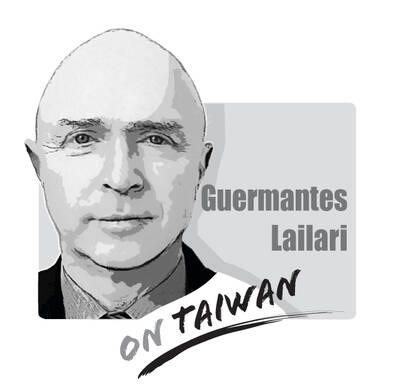Since taking office, the one thing President Tsai Ing-wen (蔡英文) has been reluctant to do is break the decades-long ambiguity surrounding the “status quo,” the one term that manages to trump the so-called “1992 consensus” in terms of the variety of definitions given to them.
Fortunately, that is expected to change later this year. Democratic Progressive Party (DPP) Chairman Cho Jung-tai (卓榮泰) told the state-owned Central News Agency in an interview that the party plans to introduce a new resolution in September that could offer a clearer definition of the “status quo.”
The lack of consensus on what exactly the “status quo” is has bedeviled cross-strait ties, as it has allowed the leaders on both sides of the Taiwan Strait to accuse each other of “changing the ‘status quo’” without ever explaining what parts have actually been changed, causing tensions to escalate easily and quickly.
For the Chinese Communist Party (CCP), the “status quo” was changed when Tsai refused to follow in the steps of her predecessor and publicly endorse a “1992 consensus” that locks Taiwan into Beijing’s “one China” framework. In its eyes, any words or actions that make Taiwan even so much as appear separate from China constitutes an attempt to alter the “status quo.”
However, the CCP does not consider its verbal threats, blocking Taiwan from participating in international organizations, or forcing foreign corporations to change how they refer to Taiwan as changes to the “status quo.” The DPP strongly disagrees, and regards actions designed to disrupt Taiwan’s democratic system as altering the “status quo.”
As for the Chinese Nationalist Party (KMT), the main components of its definition of the “status quo” are cross-strait peace and prosperity, the “1992 consensus” and the existence of the Republic of China. The KMT sees any attempt to alter any of the three as altering the “status quo.”
It is risky to talk about maintaining the “status quo” without first having a clear, unanimous definition of what it is. Although the ambiguity around the term has given political leaders and government officials more leeway in handling cross-strait issues, it could result in misinterpretations of what the majority of Taiwanese really want, causing misjudgements and raising the risk of moves that could carry dire consequences.
While most opinion polls have shown that the majority of Taiwanese support maintaining the “status quo,” the truth is, as with the “1992 consensus,” few of them know what they are actually supporting and even fewer bother to find out.
Ask any political pundit and they would say that the “status quo” — whatever it is — cannot be maintained forever. Retaining “maintaining the ‘status quo’” as a possible option for cross-strait ties will only cause the public to remain in a state of denial and delay having the necessary serious discussions about an issue that cannot be indefinitely avoided: Do I want independence or unification?
Given the renewed support for the KMT, as evidenced by last year’s local elections, and the CCP’s ramped-up effort to push for unification under a “one country, two systems” formula, next year could prove to be a make-or-break year for Taiwan’s sovereignty.
Against this backdrop, Taiwanese society must begin a dialogue on the independence/unification issue before next year’s presidential election. The DPP’s planned resolution might determine the course of that conversation.

Chinese state-owned companies COSCO Shipping Corporation and China Merchants have a 30 percent stake in Kaohsiung Port’s Kao Ming Container Terminal (Terminal No. 6) and COSCO leases Berths 65 and 66. It is extremely dangerous to allow Chinese companies or state-owned companies to operate critical infrastructure. Deterrence theorists are familiar with the concepts of deterrence “by punishment” and “by denial.” Deterrence by punishment threatens an aggressor with prohibitive costs (like retaliation or sanctions) that outweigh the benefits of their action, while deterrence by denial aims to make an attack so difficult that it becomes pointless. Elbridge Colby, currently serving as the Under
The Ministry of the Interior on Thursday last week said it ordered Internet service providers to block access to Chinese social media platform Xiaohongshu (小紅書, also known as RedNote in English) for a year, citing security risks and more than 1,700 alleged fraud cases on the platform since last year. The order took effect immediately, abruptly affecting more than 3 million users in Taiwan, and sparked discussions among politicians, online influencers and the public. The platform is often described as China’s version of Instagram or Pinterest, combining visual social media with e-commerce, and its users are predominantly young urban women,
Most Hong Kongers ignored the elections for its Legislative Council (LegCo) in 2021 and did so once again on Sunday. Unlike in 2021, moderate democrats who pledged their allegiance to Beijing were absent from the ballots this year. The electoral system overhaul is apparent revenge by Beijing for the democracy movement. On Sunday, the Hong Kong “patriots-only” election of the LegCo had a record-low turnout in the five geographical constituencies, with only 1.3 million people casting their ballots on the only seats that most Hong Kongers are eligible to vote for. Blank and invalid votes were up 50 percent from the previous
Japanese Prime Minister Sanae Takaichi lit a fuse the moment she declared that trouble for Taiwan means trouble for Japan. Beijing roared, Tokyo braced and like a plot twist nobody expected that early in the story, US President Donald Trump suddenly picked up the phone to talk to her. For a man who normally prefers to keep Asia guessing, the move itself was striking. What followed was even more intriguing. No one outside the room knows the exact phrasing, the tone or the diplomatic eyebrow raises exchanged, but the broad takeaway circulating among people familiar with the call was this: Trump did